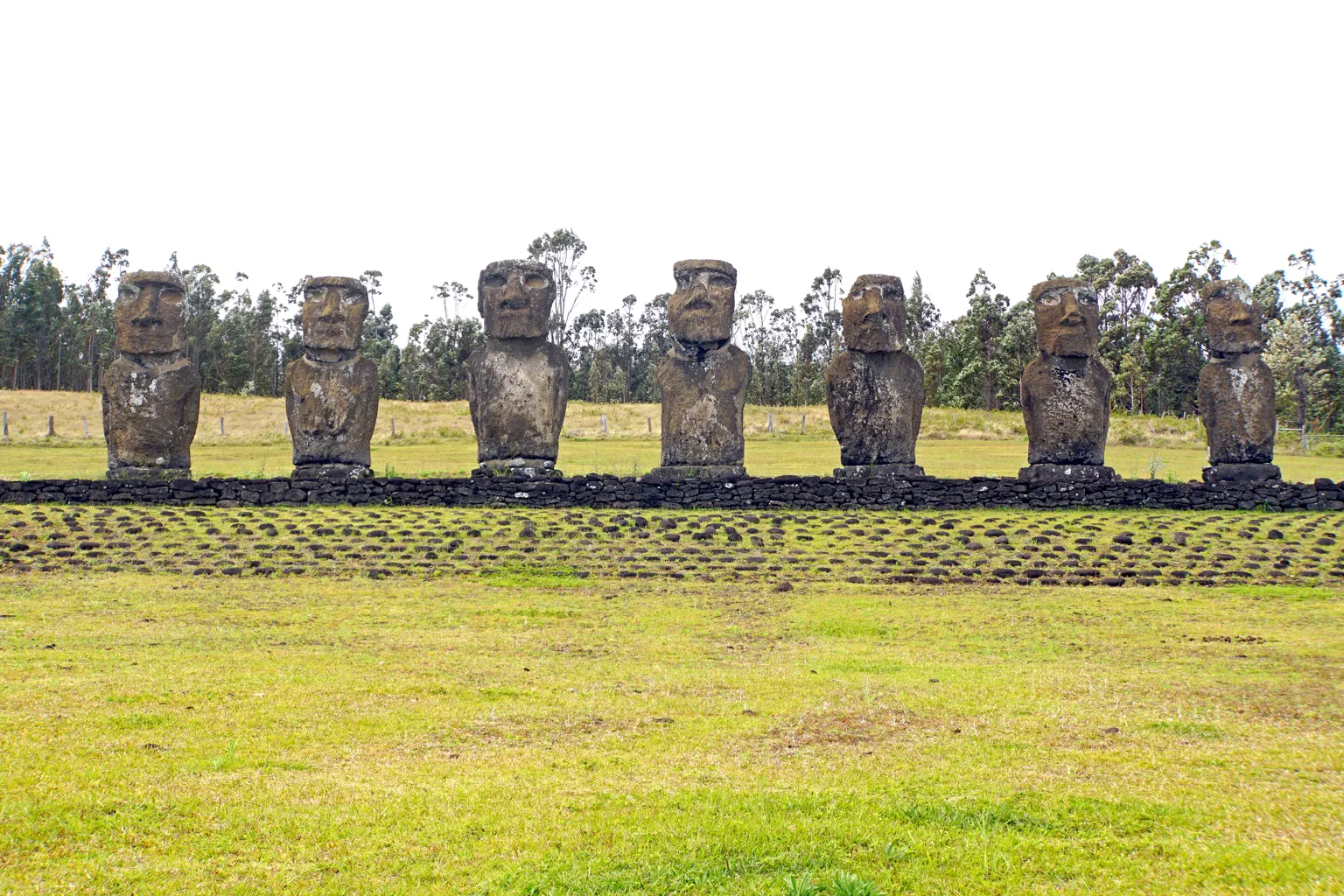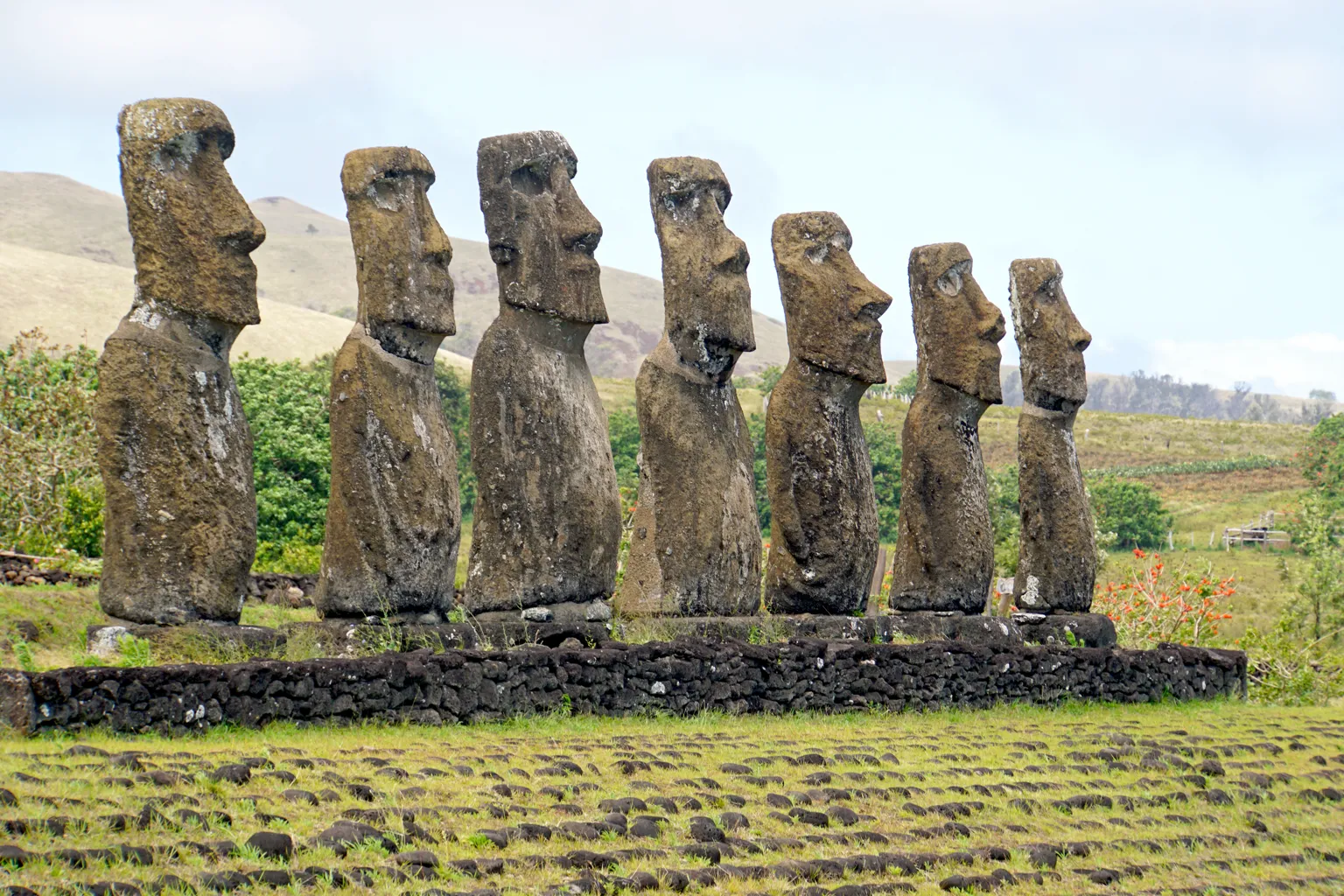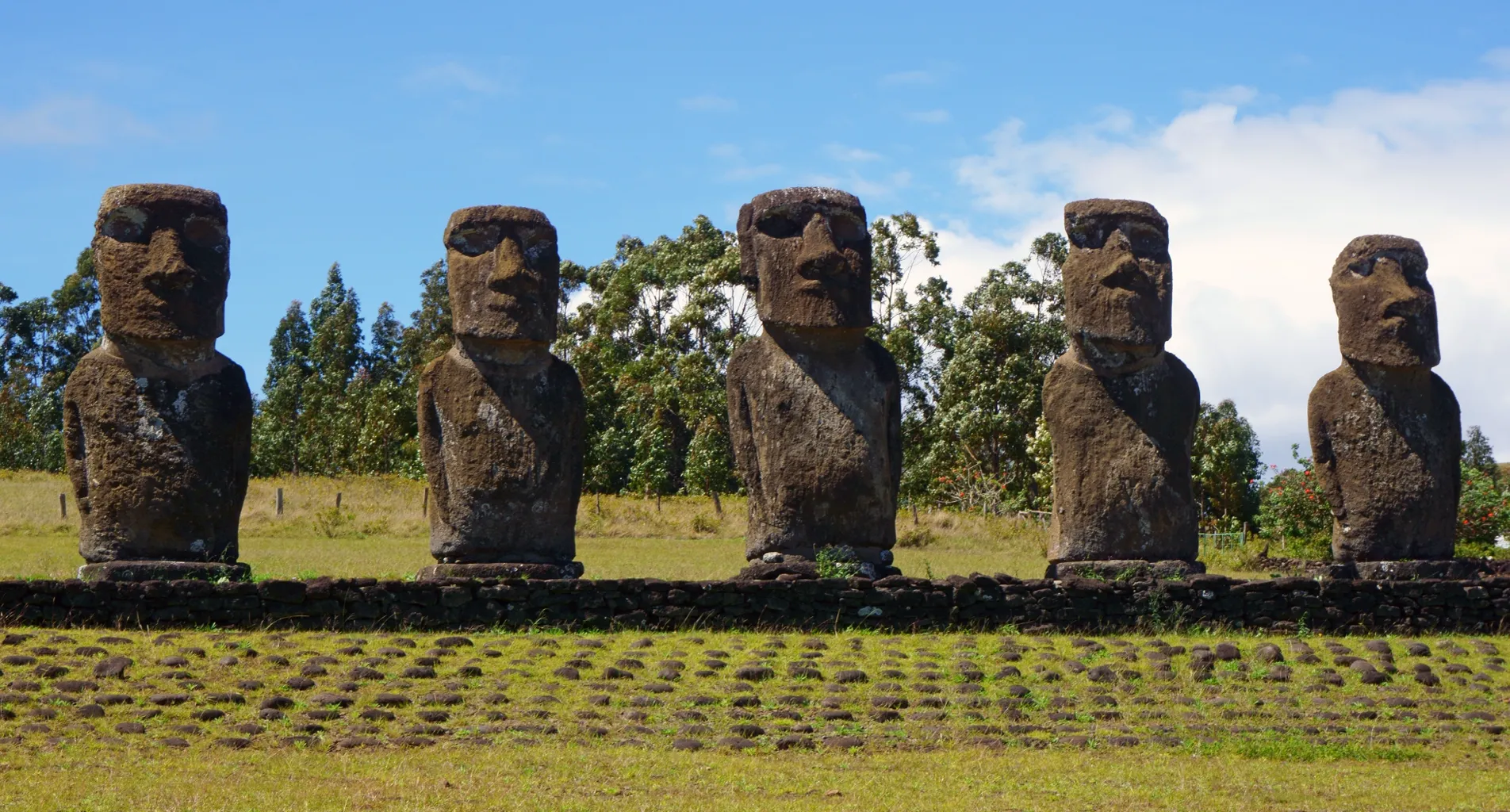Unveiling the Mysteries of Ahu Akivi
Ahu Akivi stands as a remarkable testament to the ingenuity of the Rapa Nui people on Easter Island. This sacred site, distinct from coastal moai locations, gazes inland from the island’s heart. It features seven moai statues, each mirroring the other in shape and size, crafted around the 16th century AD. These statues align with celestial events, marking both the Spring and Autumn Equinoxes, showcasing an advanced understanding of astronomy.
Get your dose of History via Email

Geographic and Cultural Context
Located on the southern slope of Maunga Terevaka, Ahu Akivi is not just a ceremonial site but also a sophisticated observatory. The site is strategically placed 2.3 kilometers inland at an elevation of 140 meters, surrounded by fertile agricultural land. This inland positioning is significant, differing from the typical coastal placements of moai, suggesting a unique role in the Rapa Nui culture.
The journey to Ahu Akivi is an experience in itself. Travelers pass by numerous fallen moai and the Puna Pau quarry, where the Rapa Nui sourced the red scoria for the statues’ pukao, before reaching this majestic site.

Historical Insights
The construction of Ahu Akivi was a phased endeavor. Initially, in the 16th century, the Rapa Nui established a rectangular platform with an approach ramp leading to a ceremonial plaza. By the early 17th century, they had erected the seven moai and added another crematorium. This site, along with Ahu Vai Teka, forms part of a larger complex, reflecting a period of prosperity and political stability that lasted 250-300 years.
The moai of Ahu Akivi are unique as they face seaward, unlike other statues on the island that typically face inland. Legend has it that this orientation was to aid navigators and appease the sea. However, another oral tradition suggests these statues represent scouts sent by a king’s priest following a prophetic dream, forever watching for their king’s arrival.
Archaeological and Restoration Efforts
The restoration efforts in 1960 by William Mulloy and Gonzalo Figueroa García-Huidobro were pivotal. They reinstated the moai to their original positions after finding them toppled. This work not only restored the site but also helped further our understanding of Rapa Nui’s prehistoric engineering techniques.
During these restorations, archaeologists discovered various artifacts, including stone disks and fish hooks, which shed light on the burial practices associated with Ahu Akivi. These findings, alongside the tree root moulds found at the site, suggest a once lush vegetation, contrasting sharply with the island’s present barren landscapes.

Conclusion
Ahu Akivi is not merely an archaeological site but a bridge to the past, offering insights into the cosmological and societal structures of ancient Rapa Nui. Its astronomical precision and unique inland location continue to captivate scholars and tourists alike, making it a key piece in the puzzle of Easter Island’s enigmatic history. The ongoing study and preservation of Ahu Akivi are crucial for understanding the complexities of this isolated yet ingenious ancient society.
Sources:

